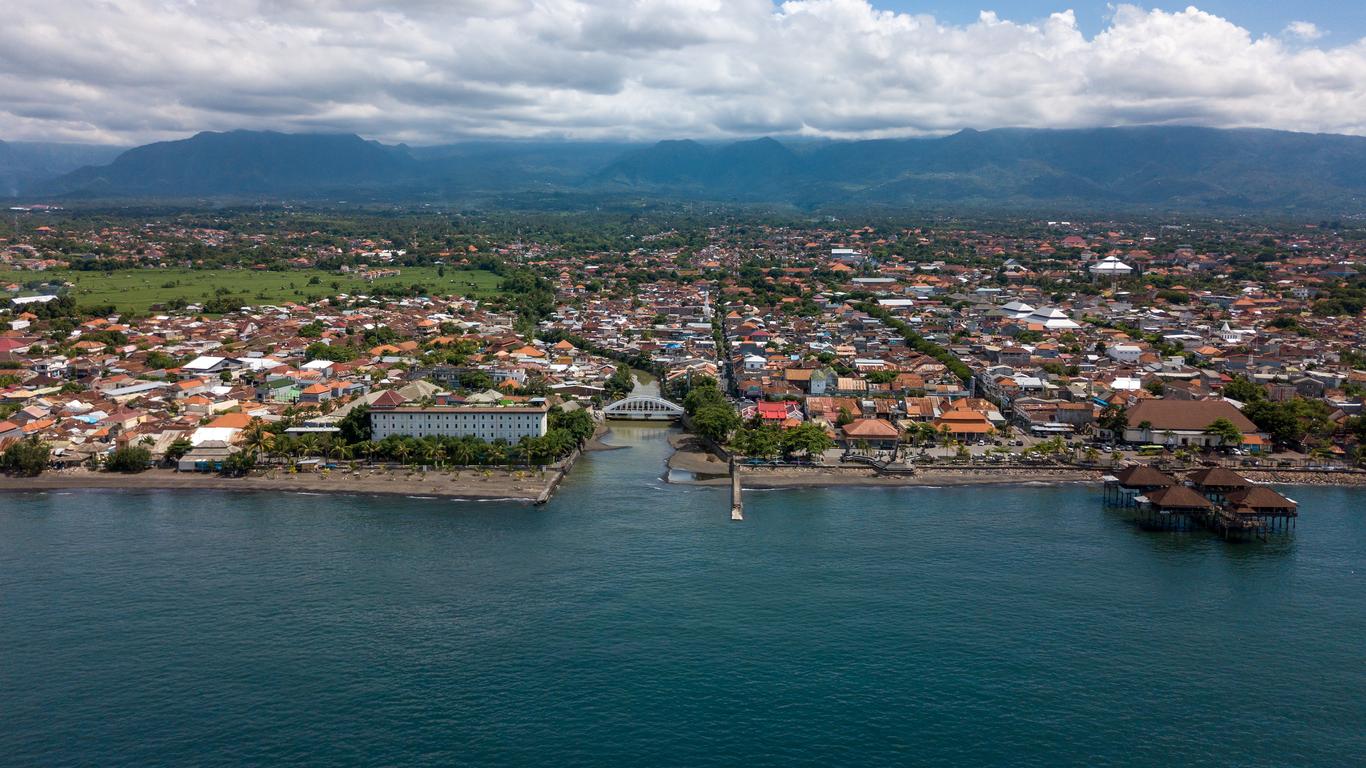Singaraya is the former colonial capital of Bali and the largest town in the north of the country. The town offers a diverse blend of cultural sites with Chinese and Hindu temples, Arabic districts and interesting architecture. There are many areas of natural beauty in the surrounding area, including Gitgit waterfalls, Banjar Hot Springs, Dalem Jagaraga Temple and several museums.
The centre of Singaraya is bustling. It’s a University town, where the atmosphere is vibrant and lively. A fascinating place of interest in the town is Gedong Kirtya Library, located in the complex of Sasana Budaya. Its collection includes manuscripts in Balinese and Roman characters and many documents from the colonial era. Perhaps the most interesting collection comes in the form of the Lontar manuscripts. These manuscripts, written on leaves of the rontal tree, date to the 14th and 15th centuries. Gitgit Waterfalls lie 10 kilometres to the south of the town. Surrounded by tropical trees, the waterfalls cascade majestically down the hillside, crashing against a spectacular rocky backdrop. It’s a place where visitors can truly immerse themselves in Balinese nature. Another highlight of the area is Ponjok Batu Temple, a sacred Hindu site constructed from local black stone. Explore the deities, statues and ornate decorations, while enjoying the serenity of this peaceful site. Singaraya has many dining options, the centre of the town is sprinkled with cafes and restaurants where visitors can indulge in a meal or light snack.
Although it’s easy to walk around Singaraya, to reach outlying areas it may be worth considering car hire. Alternatively, renting a car with a driver for the duration of a stay is an affordable and stress-free option. Local “bemos” and buses transport passengers between districts in Singaraya, although they can be busy. If arriving from the airport in the south of the island, it takes around 2-3 hours to reach the town via car.
The name Singaraya is Indonesian for “Lion King”. Between 1849 and 1953, the town was the Dutch colonial capital for Bali. It was also the port of arrival for most visitors at the time. During the Second World War, the town became an administration centre during the Japanese occupation. Today, Visitors flock to the area from all over the world to visit the beautiful waterfalls, ancient temples and explore local history.





